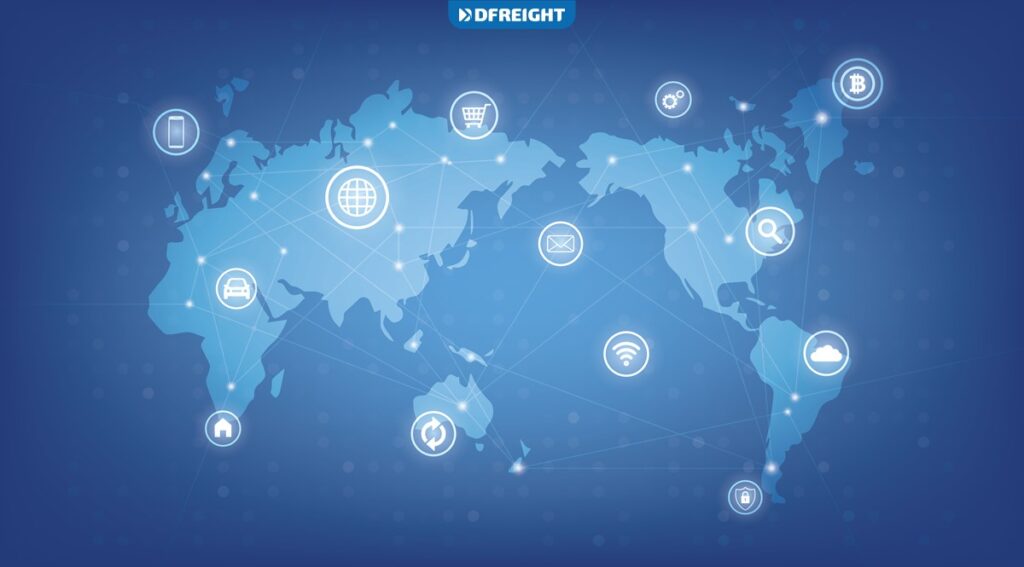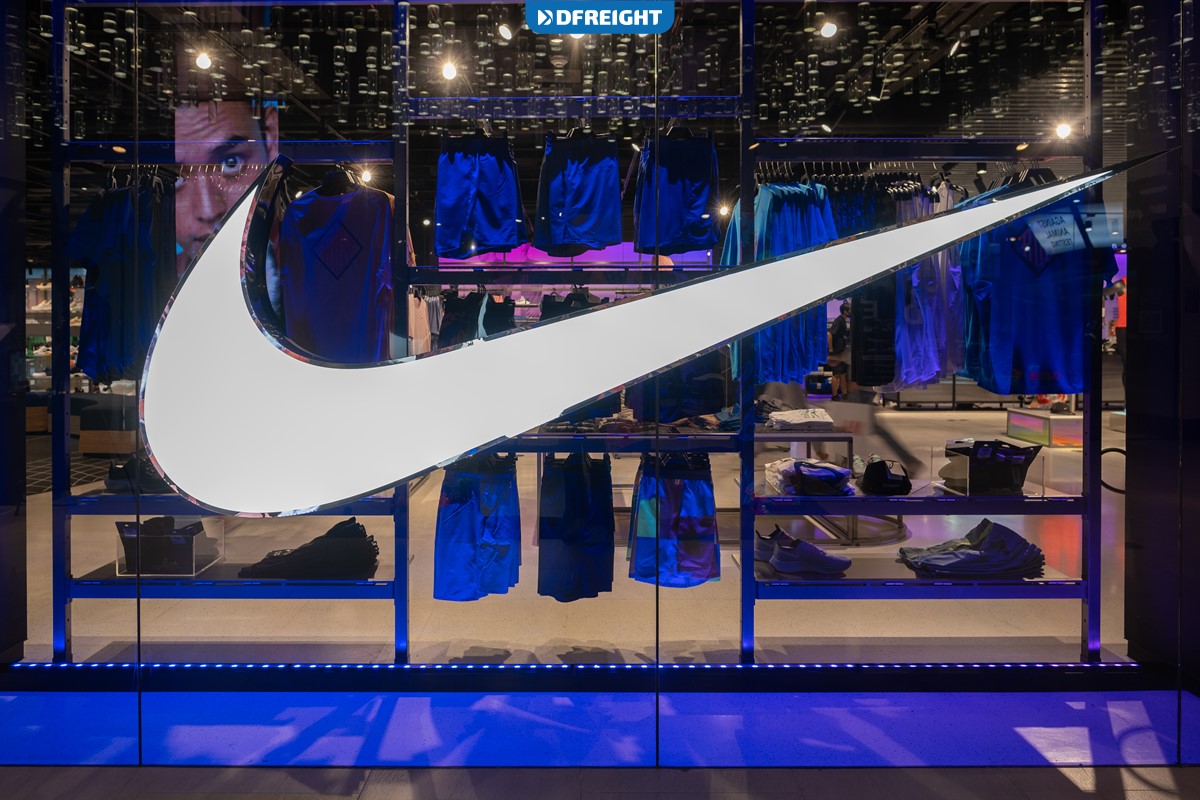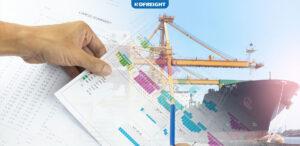Nike is an American multinational and is undoubtedly the most important player in the modern textile business as it is one of the most recognized sports brands in the world. Nike sells hundreds of millions of shoes and other products annually, and a tremendously intricate supply chain lies behind them.
DFreight is a digital freight forwarder that brings you comprehensive information about Nike’s supply chain strategy in this blog post.
Table of Contents
An Overview
The design, development, production, marketing, and sales of footwear, clothing, equipment, accessories, and services are all activities of Nike, Inc., an American multinational corporation. The business’s main office is in the Portland metro region, close to Beaverton, Oregon. It is a significant producer of sports equipment in addition to being among the biggest providers of athletic footwear and apparel worldwide.
Nike benefits from a powerful brand, efficient distribution methods, and an alluring product lineup. Supply chain excellence has been boosted in recent years and is now seen as a competitive weapon due to new market entrants with superior service and lead times, as well as fashion brands, entering their market sector.
How Does Nike’s Supply Chain Work?
The biggest sportswear and running shoe manufacturer in the world is Nike. The American multinational is undoubtedly the most important player in the contemporary textile business because it is one of the most well-known brands in the world. Nike sells hundreds of millions of shoes and other products annually, and a tremendously intricate supply chain lies behind them. Nike’s proactive approach to supply chain management has been regarded by many as a fundamental factor to its amazing success, even though there are obviously considerable problems involved in managing this complexity.
In the previous blogs, we looked into the supply chains of famous and leading companies, which you can read about each of them in the section below.
| Samsung | Coca-Cola | Zara |
| Apple | Starbucks | H&M |
| Intel | Unilever | KFC |
| Amazon | IKEA | BMW |
| Adidas | Nestle | Walmart |
| ADNOC | Tesla | Honda |
| Pepsi | Toyota | Cisco |
| McDonald | Schneider Electric | L’Oréal |
How Is Nike Changing the Supply Chain Game?
Here are four things about how Nike is changing the supply chain game:

New Regional Service Centers
By constructing new regional service centers, Nike is making an effort to increase capability, speed, and precision more sustainably. Nike will be able to deliver goods to customers more quickly and accurately thanks to the change, which will also lessen its environmental effect. The Netherlands, China, and the United States will be the locations of the new service centers. They will be driven by Nike’s in-house digital platform, which enables the business to communicate with its worldwide supply chain more rapidly and effectively.
Implement Automation and Technology
Nike is one of the most recognized brands in the world and is also a leader in automation and supply chain technology. In the past, Nike’s supply chain was largely manual and heavily reliant on manpower. Nike’s supply chain is now almost fully automated, allowing them to drastically cut costs and increase efficiency. Nike’s journey to an automated supply chain began in the early 2000s when they began investing in new technologies.
Keep, Package, Ship, and Refurbish Products
Nike is changing the supply chain game by making it easier for customers to keep, package, ship and refurbish their products. The company is working with UPS to make it easier for customers to return Nike products that they have purchased online. Customers can now drop off their Nike products at UPS locations and have them shipped back to Nike for free. Nike is also working with Best Buy to make it easier for customers to recycle their old Nike products. Customers can now drop off their old Nike products at Best Buy locations and have them recycled for free.
Empowering the People Who Power Nike
Nike is on a mission to change the way the world looks at supply chains. The company has long been an industry leader when it comes to sustainability and social responsibility, but it is now taking its commitment to a new level with its Powering the People Who Power Nike initiative. The initiative is focused on ensuring that the workers in Nike’s supply chain are treated fairly and paid a livable wage. To do this, Nike is working with its suppliers to implement a new business model that puts workers at the center. Under the new model, suppliers will be required to provide workers with a livable wage, health benefits, and access to education and training.
In addition, Nike will work with suppliers to ensure that workers have a voice in the decision-making process and that their rights are respected. This new initiative is an important step in Nike’s journey to create a more sustainable and responsible supply chain. It is also a reflection of the company’s commitment to its employees and to the communities where it does business.
Nike’s Supply Chain Transformation
Several overarching principles of Nike’s supply chain transformation include:
- Focus on the vital few prioritize: Linked investments with business strategy and profit
- Simplify end-to-end: Eliminate waste and complexity from the process before enabling
- Avoid customization: Standardize solutions to enhance workflows
- Copy-paste companywide: Duplicate successful strategies across brands, regions, and business units.
- Lead the change: Make an investment in project and transition management
- Accelerate the pace: Adapt fast to unique business requirements
- Deliver business results: finish what we start through business benefits achievement
Challenges to Managing a Global Supply Chain
Nike is a global company with a vast supply chain that includes suppliers from around the world. Managing this supply chain is a complex and challenging task. There are a number of potential risks and challenges that Nike must manage in order to keep its supply chain running smoothly.
One of the biggest challenges is managing supplier relationships. Nike works with thousands of suppliers, many of whom are located in countries with different legal systems and cultural norms. Nike must ensure that its suppliers adhere to its standards and that they are treated fairly. This can be a challenge when dealing with suppliers in countries with different legal systems and cultural norms.
Another challenge is managing the flow of goods across borders. Nike’s products are sold in markets all over the world. This means that Nike must manage the flow of goods across many different borders. This can be a challenge due to different customs regulations and procedures in different countries.
Nike must also manage the risk of disruptions to its supply chain. This can include things like natural disasters, political instability, and supplier bankruptcies.
Nike must have plans in place to deal with disruptions when they occur. Finally, Nike must continuously adapt its supply chain to changing market conditions.

What Makes Nike’s Supply Chain Unique and Effective?
The key principles behind Nike’s supply chain are outsourcing and diversification. Nike contracts 100% of its manufacturing for footwear and apparel out to independent suppliers. It was one of the earliest multinationals to adopt this approach. Thanks to effective management, Nike’s supply chain team quickly learned to manage the additional logistical complexity involved in this outsourcing and has seen significant cost savings over the years as a result. Outsourcing is inherently a risky approach, but by extensively diversifying its supplier base, Nike successfully mitigated this risk from the beginning.
Nike’s supply chain functions around three core organizational principles:
- Outsourcing: to save costs
- Diversification: to minimize risk
- Corporate social responsibility: to manage its impact on the world it works in
Under focused and experienced management, its supply chain has grown from these principles into one of the most effective and responsible large international supply chains.
Conclusion
Supply chain management is critical for businesses to be successful. An efficient and effective supply chain can make a big difference in a company’s bottom line. Good supply chain management can help businesses to keep their costs down, improve their customer service, and increase their profits.
If you are looking for a digital freight forwarder that can help you streamline your supply chain and make it more efficient, look no further than DFreight. We are a leading provider of digital freight forwarding services and can help you manage your supply chain more effectively. We offer a range of services that can help you improve your supply chain management, including online tracking, real-time visibility, and automated documentation. We also have a team of experts who can help you with any questions or concerns you may have about your supply chain. Contact us today to learn more about how we can help you streamline your supply chain and make it more efficient.
What is a successful supply chain strategy?
A successful supply chain strategy should be able to provide a company with a competitive advantage by achieving the following objectives:
– Cost reduction
– Increased efficiencies
– Improved customer service
What are some of the key components of a successful supply chain strategy?
There are a few key components of a successful supply chain strategy, which include:
– Defining the company’s value proposition
– Understanding customer needs and requirements
– Designing and implementing an efficient supply chain network
– Managing and measuring performance
How can I create a supply chain strategy?
There are a few steps you can take to create a supply chain strategy. First, you need to understand your business goals. Next, you need to assess your current supply chain. Finally, you need to develop a plan to improve your supply chain.
What are some common supply chain problems?
There are a few common supply chain problems. One problem is that the supply chain can be very complex. This can make it difficult to manage and optimize. Another problem is that the different parts of the supply chain may not be integrated. This can lead to inefficiencies and waste.
How can I optimize my supply chain?
There are a few ways you can optimize your supply chain. One way is to streamline your processes. Another way is to use technology to automate and improve your supply chain. Finally, you can outsource your supply chain to a third-party provider.














